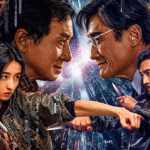Below I compiled a list of relevant words and their definitions to help readers understand the meaning of unfamiliar terms used in this site.
Article Types
Recap Articles
My recap articles summarize the key details of the episodes of the dramas/movies/shows without personal judgment. A recap is a brief overview of key details.
Review Articles
My review articles express my subjective opinions and evaluations of the drama/movie/show as a unit or several aspects. For example: scriptwriting, directing, editing, acting, or visuals) including my likes and dislikes.
I usually write a combination of review/recap articles.
Editorial Articles
My editorial articles focus on a specific topic of a specific drama/movie/show or a specific topic of several dramas/movies/shows.
Featured Articles
My featured articles make significant contributions to the site’s overall content. No connection to any drama/movie/show.
Show Types
While dramas, movies, and reality shows are self-explanatory, I wrote a specific article on Short Dramas.
Period Setting
Xianxia
Xianxia ( 仙侠 ), literally “immortal heroes”, is a genre of Chinese fantasy heavily inspired by Chinese mythology and influenced by philosophies of Taoism, Chan Buddhism, Chinese martial arts, traditional Chinese medicine, Chinese folk religion, Chinese alchemy, other traditional elements of Chinese culture, and the wuxia genre. Source: Wikipedia.
Xuanhuan
Xuanhuan ( 玄幻 ), which means “mysterious fantasy”, is a broad genre of fictional stories which remixes Chinese folklore/mythology with foreign elements and settings. Source: Novel Updates Forum. Xuanhuan stories are out of this world, a blend of magic and science fiction elements. Source: Wuxia Society.
Wuxia
Wuxia ( 武侠 ), literally “martial arts and chivalry”, is a genre of Chinese fiction concerning the adventures of martial artists in ancient China. The heroes in wuxia typically do not serve a lord, wield military power, or belong to the aristocratic class. They often originate from the lower social classes of ancient Chinese society. A code of chivalry usually requires wuxia heroes to right and redress wrongs, fight for righteousness, remove oppressors, and bring retribution for past misdeeds. Source: Wikipedia.
Chinese Period Drama
Chinese period dramas are set in a particular historical period/dynasty, and characterized by the use of costumes, sets, and props that are typical or evocative of the era.
Sageuk
Sageuk ( Korean: 사극 ) denotes Korean historical dramas. In general, there are three types of sageuk. Traditional sageuk is based on historical figures and historical facts. However, there was a lack of popularity among the younger audience in comparison with contemporary Korean dramas. The 2000s saw the birth of the fusion sageuk subgenre that blends traditional historical elements with modern settings, storylines, or even pop culture references. Recently there is also fantasy sageuk that isn’t set in real Korea or Korean dynasty and blends the costumes, sets, and props with non-historical Korean elements. Probably it’s comparable to the Chinese xuanhuan.
Republican-era Drama
A type of Chinese drama that takes place during the Republican Era, a period in Chinese history from 1912 to 1949.
Retro Drama
The term “retro” is used to describe a style that is reminiscent of a specific period, but it doesn’t refer to a specific period itself. It can refer to items that are at least 15 years older than the current year but typically refers to a drama set in the mid-20th century, often encompassing the 1950s to even early 1990s, capturing a nostalgic feel with fashion, technology, and social attitudes characteristic of that era.
Image credit: Avatour



